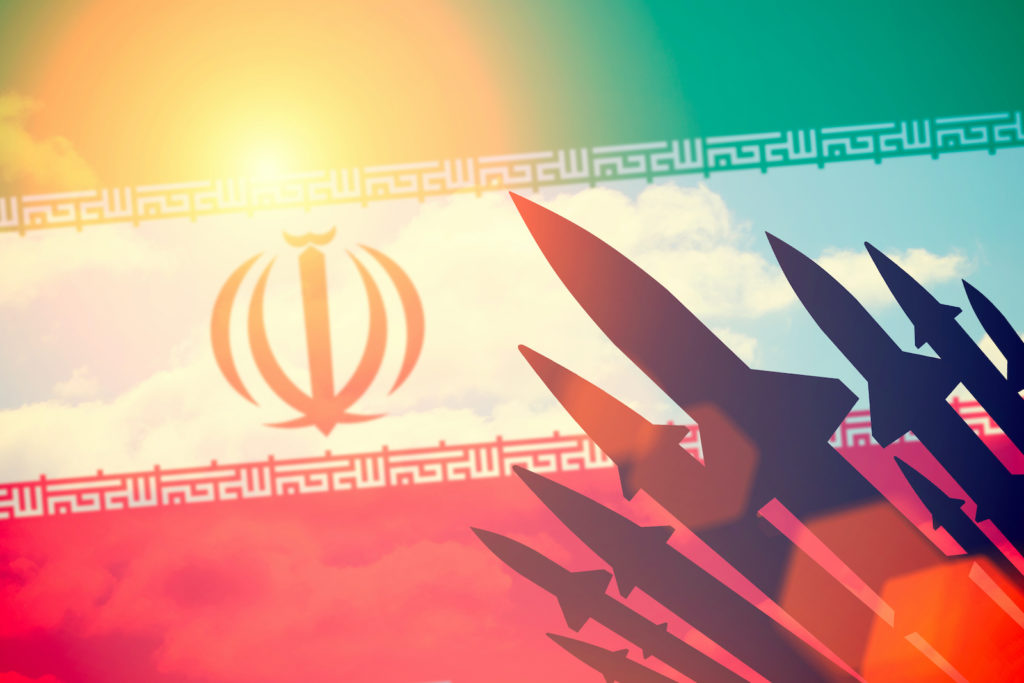UPDATES
Counter-insurgency and the planned troop “surge” in Iraq
Jan 19, 2007 | AIJAC staff
Update from AIJAC
January 19, 2007
Number 01/07 #08
This update features pieces with a focus on how the planned troop surge in Iraq, announced by US President Bush last week, relates to the theory and practice of counter-insurgency.
The first article, from the Wall Street Journal, is a good summary of what the US actually plans to do in Baghdad. It outlines how the US will divide up, and attempt to take and hold neighbourhoods, and embrace much greater use of embedding US troops with Iraqi military forces. It also has more insights into the role of Gen. David Petraeus, the counter-insurgency expert who has been picked to oversee the effort in Baghdad. For the details of what the US actually plans to do with the 20,000 additional troops being sent, CLICK HERE.
Next, military specialist Thomas Donnelly also comments on the dramatic change in US strategy being proposed, from a plan of “light footprint” to securing and defending the Iraqi people. He sees it as promising, but warns of the danger of not sustaining the surge and making it clear that the process is going to take considerable time. For his full view, CLICK HERE.
Finally, military historian Donald Stocker looks at the surge and situation in Iraq in terms of past insurgencies, including Vietnam. He says, contrary to popular belief and the lessons usually learned from Vietnam, insurgencies rarely succeed, and there is every reason to believe that the one in Iraq can eventually be halted. He says the major difficulty will be sustaining popular support for the length of time needed to bring the problem under control. For Stocker’s history lesson on insurgency and argument, CLICK HERE.
‘Unity of Effort’
The Petraeus command is the overdue beginning of the counterinsurgency.
BY DANIEL HENNINGER
Wall Street Journal, Friday, January 12, 2007
Immediately after the president’s speech, House Majority Leader Steny Hoyer said, “I heard nothing new.” Nothing? When Gen. David Petraeus takes command of U.S. forces in Iraq, it will mark the start of an historic turn in military strategy in Iraq and perhaps in U.S. war-fighting doctrine.
The U.S.’s primary problem in Iraq, manifest across 2006, has been an urban insurgency in a 30-mile radius around Baghdad and in Anbar province. The Petraeus command is the overdue beginning of the counterinsurgency.
This isn’t a one-off effort as at Fallujah, but counterinsurgency as daily U.S. military policy. It is the product of an enormous amount of self-criticism and analysis done by military and civilian analysts in and out of government. It does not mean, as often suggested the past 24 hours, that 20,000 U.S. troops are now going to run out and look for gun battles with insurgents in back alleys.
In broadest outline, the plan divides Baghdad into nine districts, essentially neighborhoods. The job of providing daily security in each district will be undertaken by an Iraqi army brigade of several thousand soldiers, a U.S. support battalion of up to 1,000 troops, and most importantly, about 20 U.S. military “embeds” or advisers.
Some of us predicted late last year that advisory embeds would be part of the new Bush strategy on reading National Security Adviser Stephen Hadley’s November memo of advice to the president in the New York Times. After a late November trip to Iraq, Mr. Hadley said four times in the memo that the U.S. should embed coalition forces with Iraq’s army and dysfunctional police.
The source of this idea, in part, was a successful Marine experiment in Anbar province. Rather than attach just a single U.S. military adviser to an Iraqi commander at the division level, the Marines put advisers alongside Iraqi units down to the NCO level. They stayed with and fought with their Iraqi counterparts 24/7. And the Marines reported that the Iraqis fought with more confidence and effect, a k a spine-stiffening.
In 2004, a similar but broader effort at integration between U.S. and Iraqi forces was planned in Anbar province by Marine Maj. Gen. James Mattis. The Mattis plan is summarized in the middle of the Army’s new Counterinsurgency Manual, released just last month. The manual’s drafting was overseen by Gen. David Petraeus, who will now direct the U.S. military effort in the neighborhoods of Baghdad. It’s not a coincidence. The manual describes in detail the purpose, theory, tactics and problems (including spikes in violence and casualties) likely to emerge during the new counterinsurgency strategy.
At the end of the manual there is a bibliography of books, studies and articles on fighting insurgency. It includes classics, such as Alistair Horne’s “A Savage War of Peace,” but what’s interesting is how many of them were published since 2003, amid the Iraq war. Out of this effort has emerged a “best practices” for the U.S. when fighting an insurgency, as now.
Whether the U.S. should have done this back when Abu Musab al-Zarqawi and his foreign suicide bombers emerged is a legitimate question. The point is this: The Iraq violence has not been running like an untended open hydrant. Some of our best and brightest have been thinking hard about how to shut the valve. Last month AEI released a plan reflecting similar counterinsurgency ideas by military specialist Fred Kagan and the Army’s former vice chief of staff, Gen. Jack Keane.
In November, the Bush administration joined the rethinking. The participants in that process looked at the whole range of criticisms and formal critiques of what the U.S. had been doing in Iraq to that point. They concluded the one thing that wouldn’t change is the goal, mainly establishing a democratic government in Iraq. What would change, heretofore a nonsubject, were the strategic concept and the level of resources.
Some of this came out of Gen. Petraeus’s Counterinsurgency Manual, some from U.S. commanders in the field and some from the military think tanks. Suggestions that had gotten a “no” before, now got a “yes.”
Is it all a day late and a dollar short? Maybe. Some 20,000 more troops may be insufficient. The inevitable front-page casualty reports and blood-soaked photos may still drain the will of domestic pundits. But what we are seeing in the Petraeus command is the kind of step back that the military sometimes excels at. This the U.S. military at its potential best–remaking itself, as it did with the transition to training a volunteer army after Vietnam.
It is not the least bit obvious that this counterinsurgency plan will fail, and only the most churlishly neurotic Bush hater would want it to. The stakes for the region and the war on terror have been described many times. There is another reason: How this ends will have an important effect on the morale of our officer corps, the people who must summon the gumption to protect us. They deserve a final chance to succeed. This is the chance.
An idea one finds in the counterinsurgency literature, crucial to the success of any such strategy, is known as “unity of effort.” Basically, it means all oars pulling in the same direction. The Iraqi government, for instance, has told the U.S. it will stop interfering in the military’s rules of engagement. Tuesday’s victorious 10-hour battle on Baghdad’s Haifa Street, by a combined U.S.-Iraqi force, looked like a successful test of unified effort. It remains to discover whether anything resembling unity of effort can be achieved along Constitution Avenue.
Nothing would more raise the tenor of this debate than if some member of the Democratic Party would take ownership of the subject of military doctrine in Iraq. On the evidence of their statements the past 24 hours, barely a Democrat exists with a clue of what Gen. Petraeus is about to do or why.
Sen. Barack Obama, presidential second-runner, said, “We are not going to babysit a civil war.” Democrats will get a chance soon at Senate confirmation hearings to question Gen. Petraeus. Babysitter is not the word he brings to mind. His appointment is the result of a ferment in American military thinking on Iraq that goes well past George Bush “alone.” They should hear him out before deciding whether to support this effort, or remain in the opposition.
Mr. Henninger is deputy editor of The Wall Street Journal’s editorial page.
————————————————————————
Finally, a Better Strategy
Thomas Donnelly
San Diego Union-Tribune, January 14, 2007
“We need a man, and then a plan.”
So Field Marshall Bernard Law Montgomery is reported to have said when recommending Gen. Sir Gerald Templer to be British high commissioner at the height of the Malayan insurgency of the early 1950s. When Templer was summoned to meet Prime Minister Winston Churchill, newly returned to power, the British Lion–satiated by a full dinner and waving a brandy glass, bellowed: “Templer! Malaya!” A few minutes later: “Templer! Full powers!” And finally, “Full power, Templer. Very heady stuff. Use it sparingly.”
One hopes that something like this scene, sanitized to meet modern sensibilities, will repeat itself when President Bush finally and formally summons Lt. Gen. David Petraeus to Washington to take charge of U.S. counterinsurgency efforts in Iraq. For all the thunder and lightning in Washington this week about a new strategy in Mesopotamia, the fact is that the plan does depend on the man: In irregular war, perhaps more than in any other form of combat, people and leaders matter most. Napoleon reckoned that moral factors outweighed material factors by 3-to-1, but the ratio in small wars is larger still. What matters most in Iraq now is not what President Bush or the Democratic leadership in Congress do in Washington–they can lose the war but cannot win it–but rather what Petraeus and the Iraqis do in Baghdad.
Already we have seen how leadership matters. American strategy in Iraq has thus far been shaped primarily by retiring Gen. John Abizaid, the long-serving chief of U.S. Central Command. Abizaid has operated from the premise that Americans are inevitably seen as occupiers in Arab lands, and thus that our military “footprint” should be as light and small as possible, that it should be the U.S. mission to train Iraqi security forces while waiting for the Iraqis to achieve a post-Saddam political consensus. That was a reasonable plan, but it has failed. And so Lt. Gen. Petraeus will ship out for Iraq with a new priority: Get the security situation under control. The plan he will have to invent and imagine on the spot.
At the same time, it will be a plan consistent with the principles highlighted in President Bush’s speech last Wednesday: The core mission is to secure and protect the Iraqi people, particularly the people of central Baghdad. This definition of the mission is far more important than whether there is a “surge” in U.S. forces; what American troops do matters more than how many of them there are. And this is a mission Petraeus is uniquely suited to execute.
The new Army and Marine Corps counterinsurgency manual, which Petraeus has directed in his current post at Fort Leavenworth, declares, “The cornerstone of any effort is establishing security for the civilian populace. Without a secure environment, no permanent reforms can be implemented and disorder spreads.” These are principles that also guided Petraeus’ tenure as the commander of the 101st Airborne Division, which not only participated in the initial invasion of Iraq but conducted a highly successful counterinsurgency and reconstruction campaign in and around the city of Mosul in northern Iraq in 2003 and early 2004. But alas, this success–and this embrace of classic counterinsurgency tactics–has been the exception rather than the rule for U.S. forces.
Nor is this a mission impossible. Despite the popular, television-fed image of Iraq as a country eternally in flames, the majority of the violence and sectarian cleansing operations occur in familiar and relatively restricted areas: The three provinces of Anbar, Diyala and Baghdad account for the overwhelming majority of attacks. And the city of Baghdad is unquestionably the strategic “center of gravity,” the central front not only for the Sunni insurgents but for the Shia militias such as Moqtada al Sadr’s Jaysh al Mahdi, or “Mahdi Army.” This is where, first and foremost, the United States and the Iraqi government must win by protecting the people.
This recognition is also the key to defining the size of the troop increase. Petraeus will soon have nine U.S. brigades to call on to secure Baghdad, making the outcome almost a foregone conclusion, regardless of what the Iraqis do. This is a force sufficient to put an American battalion in each of the 23 key neighborhoods–the traditionally ethnically mixed neighborhoods of Baghdad–that are the front lines of the current conflict. Importantly, it will also provide for a sufficient reserve for emergency response or to exploit success.
A second calculation shaping the size of the surge is the need to increase forces in Anbar province. This is not only in anticipation that Sunni fighters driven from Baghdad might return to their traditional base of operations, but in recognition that the Marine Corps and Army units now stationed there have achieved a significant success in recent months, driving a wedge between the Sunni sheiks and clan leaders and the al-Qaeda-led insurgency and Baathist remnants.
The factor of time is the third and most crucial element shaping the surge. Indeed, “surge” is the wrong term; ironically, the Democrats’ rhetoric of “escalation”–intended entirely to enflame and to evoke memories of Vietnam–is more accurate. We will not be able to break the cycle of violence in Iraq unless we likewise break our cycle of abandoning our allies in their hour of need.
More than a year ago, Secretary of State Condoleezza Rice defined an American strategy of “clear, hold and build.” To be successful, the surge must be sustained; it will take three months or more to deploy the new units and it will take a year to 18 months to convince the Iraqis, friend and foe, that we mean business.
Here we cross from where the plan determines the size of the force to where the size of the force determines the plan. It is no secret that the Army and Marines are mightily stressed by continuing deployments, not only to Iraq but to Afghanistan or the Horn of Africa–where a significant victory recently resulted from the Ethiopian invasion, aided and abetted by the United States, of Somalia and the rout of Islamist government from Mogadishu. This past week, new Defense Secretary Robert Gates announced the administration’s intention to expand the active Army to 547,000 and the Marine Corps to 202,000. A larger land force is essential, not only for sustaining the initiative to be won in Iraq in the coming year but for sustaining the long-term fight against Islamic extremism, the rightly called “Long War.”
And if there is a real weakness in the administration’s plan, a moment this week when their long habits of denial, happy talk and political spinning reared their unfortunate heads, it was in this regard. The Army numbers, in particular, are less than meet the eye. To begin with, Gates announced that Army strength would increase by 65,000, but in fact the number is half that; they double-counted “temporary” increases made by former Defense Secretary Donald Rumsfeld. The size of the Army will soon be 512,000, so the increase is less than advertised. It’s also far below what’s needed. For the past four years, the size of the active Army–meaning regulars plus those mobilized Guardsmen and Reservists called to active service–has hovered between 600,000 and 625,000. That’s indicative of what the real need was, even to carry out a cheeseparing strategy. To execute and sustain a winning strategy will require a far larger force of regulars, soldiers and Marines raised, trained and schooled to carry out the constabulary duties of the Long War.
Thus, the story of the past week also comes back to the test of a man, a leader. In this case, Gen. George Casey, the man Petraeus will replace and who has been designated to become the next Army chief of staff. I have known both Casey and Petraeus for the better part of two decades, since they both served on the special staff for Gen. Carl Vuono, Army chief when the Cold War ended.
Press reports have it that Casey was opposed to the new direction in Iraq, and some pundits worry that Casey would fight a rear guard action from the Pentagon, delaying deployments and so forth. I believe, however, that Casey is well-suited to be chief of staff and will work well with Petraeus. I think these are two men who can work together to shape a plan that can achieve the near-term success so needed in Iraq and build the force needed to fight the battles of the Long War. We may have found the men who can create a plan for victory.
Thomas Donnelly is a resident fellow in Defence and Security Policy Studies at the American Enterprise Institute. Previously, he was policy group director for the Committee on National Security (now named the Committee on Armed Services) in the U.S. House of Representatives, and editor of Armed Forces Journal, Army Times and Defense News.
————————————————————————
Insurgencies Rarely Win – And Iraq Won’t Be Any Different (Maybe)
By Donald Stoker
Foreign Policy, January 2007
Vietnam taught many Americans the wrong lesson: that determined guerrilla fighters are invincible. But history shows that insurgents rarely win, and Iraq should be no different. Now that it finally has a winning strategy, the Bush administration is in a race against time to beat the insurgency before the public’s patience finally wears out.
The cold, hard truth about the Bush administration’s strategy of “surging” additional U.S. forces into Iraq is that it could work. Insurgencies are rarely as strong or successful as the public has come to believe. Iraq’s various insurgent groups have succeeded in creating a lot of chaos. But they’re likely not strong enough to succeed in the long term. Sending more American troops into Iraq with the aim of pacifying Baghdad could provide a foundation for their ultimate defeat, but only if the United States does not repeat its previous mistakes.
Myths about invincible guerrillas and insurgents are a direct result of America’s collective misunderstanding of its defeat in South Vietnam. This loss is generally credited to the brilliance and military virtues of the pajama-clad Vietcong. The Vietnamese may have been tough and persistent, but they were not brilliant. Rather, they were lucky—they faced an opponent with leaders unwilling to learn from their failures: the United States. When the Vietcong went toe-to-toe with U.S. forces in the 1968 Tet Offensive, they were decimated. When South Vietnam finally fell in 1975, it did so not to the Vietcong, but to regular units of the invading North Vietnamese Army. The Vietcong insurgency contributed greatly to the erosion of the American public’s will to fight, but so did the way that President Lyndon Johnson and the American military waged the war. It was North Vietnam’s will and American failure, not skillful use of an insurgency, that were the keys to Hanoi’s victory.
Similar misunderstandings persist over the Soviet Union’s defeat in Afghanistan, the other supposed example of guerrilla invincibility. But it was not the mujahidin’s strength that forced the Soviets to leave; it was the Soviet Union’s own economic and political weakness at home. In fact, the regime the Soviets established in Afghanistan was so formidable that it managed to survive for three years after the Red Army left.
Of course, history is not without genuine insurgent successes. Fidel Castro’s victory in Cuba is probably the best known, and there was the IRA’s partial triumph in 1922, as well as Algeria’s defeat of the French between 1954 and 1962. But the list of failed insurgencies is longer: Malayan Communists, Greek Communists, Filipino Huks, Nicaraguan Contras, Communists in El Salvador, Che Guevara in Bolivia, the Boers in South Africa (twice), Savimbi in Angola, and Sindero Luminoso in Peru, to name just a few. If the current U.S. administration maintains its will, establishes security in Baghdad, and succeeds in building a functioning government and army, there is no reason that the Iraqi insurgency cannot be similarly destroyed, or at least reduced to the level of terrorist thugs.
Insurgencies generally fail if all they are able to do is fight an irregular war. Successful practitioners of the guerrilla art from Nathanael Greene in the American Revolution to Mao Zedong in the Chinese Civil War have insisted upon having a regular army for which their guerrilla forces served mainly as an adjunct. Insurgencies also have inherent weaknesses and disadvantages vis-à-vis an established state. They lack governmental authority, established training areas, and secure supply lines. The danger is that insurgents can create these things, if given the time to do so. And, once they have them, they are well on their way to establishing themselves as a functioning and powerful alternative to the government. If they reach this point, they can very well succeed.
That’s why the real question in Iraq is not whether the insurgency can be defeated—it can be. The real question is whether the United States might have already missed its chance to snuff it out. The United States has failed to provide internal security for the Iraqi populace. The result is a climate of fear and insecurity in areas of the country overrun by insurgents, particularly in Baghdad. This undermines confidence in the elected Iraqi government and makes it difficult for it to assert its authority over insurgent-dominated areas. Clearing out the insurgents and reestablishing security will take time and a lot of manpower. Sectarian violence adds a bloody wrinkle. The United States and the Iraqi government have to deal with Sunni and Shia insurgencies, as well as the added complication of al Qaeda guerrillas.
But the strategy of “surging” troops could offer a rare chance for success—if the Pentagon and the White House learn from their past mistakes. Previously, the U.S. military cleared areas such as Baghdad’s notorious Haifa Street, but then failed to follow up with security. So the insurgents simply returned to create havoc. As for the White House, it has so far failed to convince the Iraqi government to remove elements that undermine its authority, such as the Mahdi Army. Bush’s recent speech on Iraq included admissions of these failures, providing some hope that they might not be repeated.
That’s welcome news, because one thing is certain: time is running out. Combating an insurgency typically requires 8 to 11 years. But the administration has done such a poor job of managing U.S. public opinion, to say nothing of the war itself, that it has exhausted many of its reservoirs of support. One tragedy of the Iraq war may be that the administration’s new strategy came too late to avert a rare, decisive insurgent victory.
Donald Stoker is professor of strategy and policy for the U.S. Naval War College’s Monterey Program. His opinions are his own. He is the author or editor of a number of works, including the forthcoming From Mercenaries to Privatization: The Evolution of Military Advising, 1815-2007 (London: Routledge, 2007).











